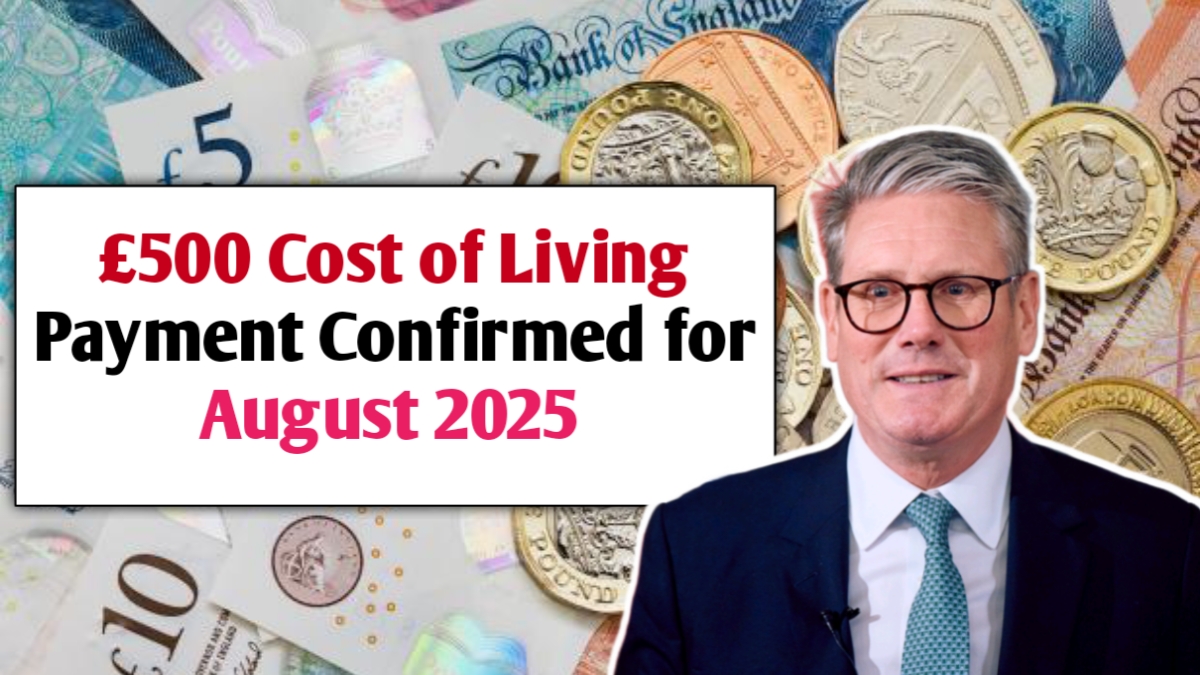Millions of households across the UK continue to feel the pinch of rising bills, expensive food shops, and general cost-of-living pressures. In response, the UK government has confirmed a £500 Cost of Living Payment, due to arrive in August 2025. This initiative is part of the Department for Work and Pensions’ (DWP) wider effort to support low-income families, pensioners, and vulnerable groups as inflation and essential expenses remain high. This article explores why the payment has been introduced, who qualifies, when the money will arrive, and how families can combine it with other available schemes to maximize support.
What is £500 Cost of Living Payment?
The cost-of-living crisis is not a new phenomenon for UK households. Since 2021, families have faced soaring energy bills, higher food prices, and increases in council tax, rent, and mortgages. Although inflation has slowed compared to its peak in 2022, it remains above target, while April 2025 saw what was described as an “awful April.” That month brought steep rises in utility bills, most notably a 26.1% jump in water and sewage charges, driving inflation up to 3.5%. For households already surviving on tight budgets, such increases can feel devastating. The government’s £500 Cost of Living Payment aims to ease this pressure during the summer months, covering everything from utility bills to school holiday expenses.
Three-Phase Support Strategy
This £500 payment is not an isolated measure but part of a three-stage financial support package designed to spread relief across 2025.
- Spring 2025 (March–May): Eligible households received a £301 payment, which helped many recover from winter fuel bills.
- Summer 2025 (July–August): A smaller £200 payment supported families with holiday expenses and rising grocery costs.
- August 2025 – The Big Boost: The largest payment yet, £500, is being delivered as a “Summer Top-Up” between August 5 and August 15.
By staggering payments across the year, the DWP aims to provide consistent, predictable relief rather than a one-off injection.
Eligibility Criteria
One of the most reassuring features of the scheme is its automatic eligibility. There is no need for households to apply, which reduces confusion and prevents vulnerable people from missing out.
The payment will go to anyone who, during the qualifying period, is already receiving:
- Universal Credit (UC)
- Pension Credit
- Employment and Support Allowance (income-related)
- Jobseeker’s Allowance (income-related)
- Working Tax Credit
- Child Tax Credit
Payments will be delivered directly through the same method people currently receive their benefits—whether that’s a bank transfer, DWP payment card, or Post Office collection. Importantly, the £500 is non-taxable and will not affect the level of benefits a household already receives.
When and How Payment Arrives
The DWP has confirmed the money will arrive between August 5 and August 15, 2025. Recipients are encouraged to:
- Check their payment accounts around this period.
- Update any bank or contact details in their Universal Credit or benefits account to prevent delays.
- Wait until the end of August before contacting the DWP if the payment hasn’t appeared, as some transactions may take longer depending on banks.
This seamless process mirrors earlier cost-of-living schemes in 2023 and 2024, which were also delivered automatically to millions without requiring forms or applications.
Summer Time Payment
Some may wonder why a large payment is being released in August, rather than waiting until the colder months when heating costs spike. The answer lies in seasonal pressures.
- School Holidays: Families face increased food, childcare, and activity expenses during the long summer break.
- Pre-Winter Preparation: Many households use extra summer funds to pay off debts or save for winter fuel bills.
- Holiday Spending: Travel and leisure costs rise in summer, particularly for those with children.
By delivering a substantial sum in August, the government is attempting to reduce financial stress before the winter crunch begins.
Wider Support
While the £500 payment offers a significant boost, households may be eligible for additional help that can stretch their budget even further:
- Household Support Fund: Local councils provide targeted grants—sometimes up to £500 per household—for emergencies like food or rent arrears.
- Warm Home Discount: A £150 reduction on electricity bills for low-income households.
- Free School Meals and Vouchers: Available to eligible children, reducing holiday food costs.
- Council Tax Rebates & Discounts: Support varies by local authority but can offer savings of hundreds annually.
- Broadband and Utility Discounts: Some providers offer cheaper tariffs to those on benefits.
In fact, research suggests that families on Universal Credit can claim additional discounts worth more than £17,000 a year if they access all available schemes. Yet many miss out simply because they are unaware.
Conclusion
The confirmed £500 Cost of Living Payment in August 2025 represents the government’s latest attempt to ease the burden on low-income households amid ongoing financial pressures. Delivered automatically and tax-free, the payment will reach millions between August 5 and 15, offering much-needed relief during a costly summer period. While it cannot solve the wider challenges of inflation and rising living costs, it remains a vital lifeline for those struggling most. Families are encouraged to pair this payment with local schemes, grants, and discounts to maximize support and strengthen financial resilience ahead of the winter months.
